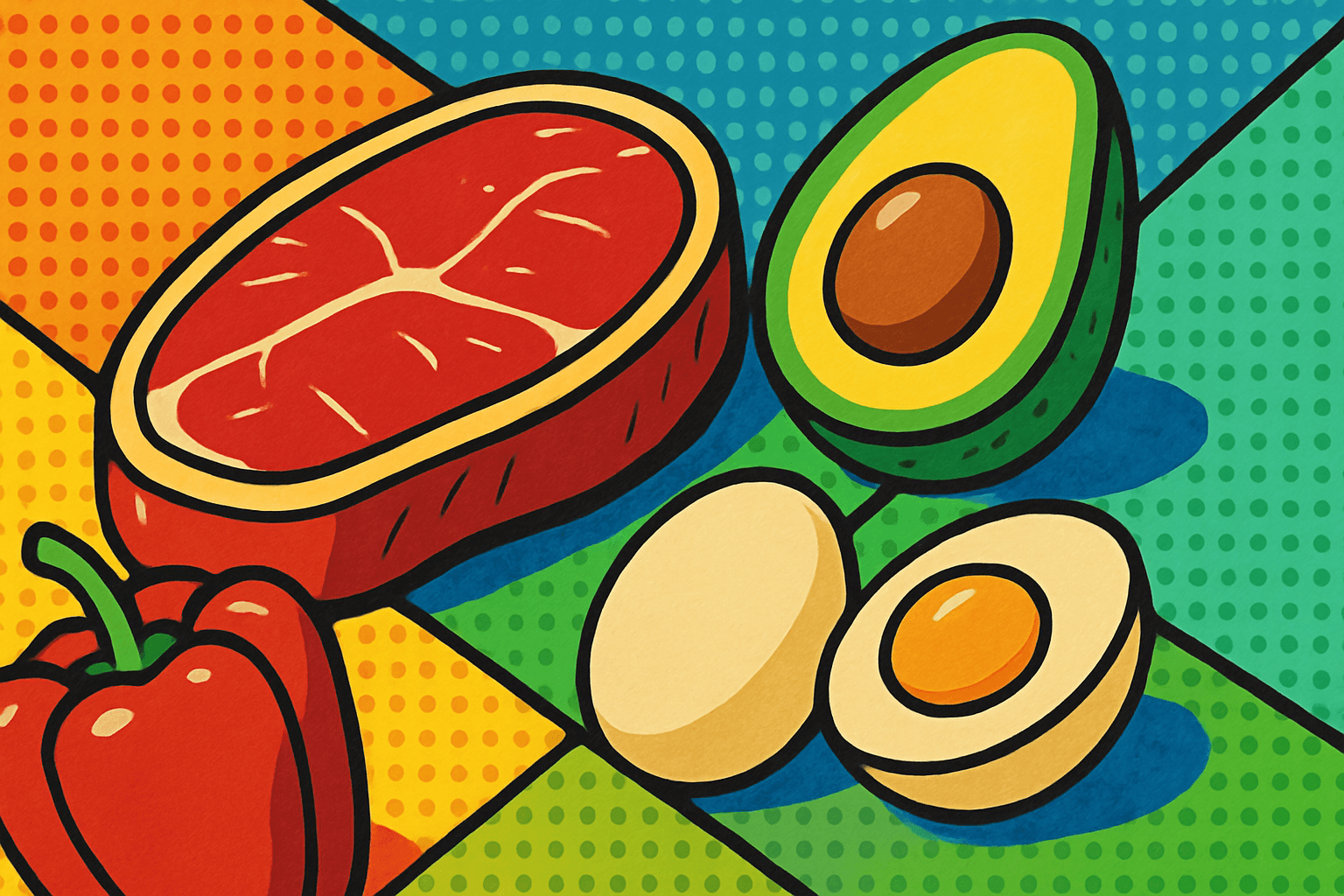UNDERSTANDING ELIMINATION DIETS: HOW TO IDENTIFY FOOD SENSITIVITIES AND HEAL YOUR BODY
Published on July 16, 2025

In the event that you suffer from bloating, fatigue, headaches, skin problems, or digestive issues on a regular basis, chances are you are sensitive to particular foods that you may or may not be aware of the sensitivity. These “hidden” food sensitivities or intolerances can wreak havoc with chronic inflammation, hormonal disruption and a nauseating plethora of symptoms that drag your quality of life into the quagmire. No known food sensitivity test has been proven to work, anecdotally for ones that do there are often more negative reviews than positive ones (not because it doesn't work, but because nothing is going to work outside of a good old fashioned, brute force elimination diet). An elimination diet is a well established approach to help figure this out (systematically removing and adding foods to determine what makes you feel bad), and is also likely to reduce inflammation and promote gut healing. In this article we'll examine what elimination diets are, how they function, the reasons they're effective, and give you the lowdown on how you can apply them yourself to transform your health.
What Is an Elimination Diet?
An elimination diet is a planned and systematic way of eating that omits foods believed to be problematic, such as common allergy-causing foods, for a period of time. You’re in the elimination phase, which typically lasts from three to six weeks, a time you give up eating all those things like gluten, dairy, soy, eggs, corn, nuts, nightshades (those include tomatoes, peppers and eggplant) and lots and lots of various food additives or preservatives that might be hiding in processed foods.
After the elimination period, foods are slowly reintroduced one by one usually over two to three days per food and you monitor your body’s reactions carefully. This methodical approach empowers you to discover what foods are causing symptoms, so you can customize your diet to meet your own needs and tolerances.
Why Do Elimination Diets Work?
A variety of chronic conditions are driven by low-grade inflammation caused by immune reactions to specific foods. Immediate food allergies which you’ve likely heard of work in such a way that when you ingest a food, you react shortly thereafter. Food sensitivities on the other hand, work differently, producing more delay responses that you may not directly connect to something you just ate. Some of these immune-based responses may appear as digestive distress (bloating, gas or diarrhea), skin problems like eczema or acne, headaches/migraines, chronic fatigue, joint pain, aggravating mood changes, hormonal imbalances and so forth.
Removing these offending foods means your body won’t suffer the same inflammatory load, which in turn allows your gut and immune system to heal and re-regulate.
Heal the Gut
It balances the gut lining for better nutrient absorption and a stronger immune system which means increased overall vitality, improved digestion, and a reduced tendency to allergies or autoimmune reactions.
Benefits Beyond Identifying Triggers
In addition to helping you identify problematic foods, following an EGID can lead to dramatic health benefits that change the lives of many individuals.
More Energy and Mental Clarity: Lower overall inflammation can help to relieve chronic fatigue and brain fog, leading to clearer thinking and better clarity of thought.
Less Pain and Discomfort: Pain and aches in the joints, headaches, migraines and stomach distress can all be eased by removing trigger foods from the diet.
Better Skin Quality: Skin conditions associated with immune responses and inflammation, including eczema, acne, and rosacea, may clear up significantly.
Healthy Digestive System: Reclaiming gut health helps ease bloating, gas, constipation, and discomfort supporting a healthy gut environment.
Enhanced Immune Function: By subduing chronic immune activation, the body could initiate more proportional responses to germs, therefore becoming less susceptible to illness.
How to Do an Elimination Diet the Right Way
Phase 1: Elimination
You eliminate all suspected trigger foods during the elimination phase. Instead, nourish your body with nutrient- and anti-inflammatory-rich whole foods such as leafy greens (spinach and kale), cruciferous vegetables (broccoli and cauliflower), antioxidant-rich berries, grass-fed meats, wild-caught fish, extra virgin olive oil and the seeds chia and flax.
Processed foods, pre packaged snacks, any artificial preservatives also cannot be consumed nor anything that has the eliminated ingredients in it. And being a diligent food-label reader is a must in making sure you’re not being exposed to sneaky triggers that will wreck your efforts.
Phase 2: Reintroduction
Starting at three to six weeks, the elimination phase ends and you can start re-introducing the foods you eliminated on an one-off basis. When you add back a food, eat what you’re adding in the morning in a small amount, and then see how you feel over the next day or two to see if you have any symptoms—such digestive issues, skin problems, headaches, mood swings, or fatigue.
If you see no symptoms, it may be safe for you to continue to eat that food as part of your regular diet. If reactions are an issue, discontinue the food and wait until symptoms resolve before trialing another food. It is helpful to keep a very detailed symptom journal at this time so you can accurately trace food to reactions.
Keeping a Symptom Journal
Keep a very detailed journal every day of every food eaten as well as any physical, emotional and digestive symptoms you are experiencing at those times to trace trends and identify problem foods. Give details about the time of onset, severity and length of time of symptoms to get a complete data for correlation.
Meal Examples of Elimination Phase
Breakfast: A nutrient-dense green smoothie made with spinach, coconut milk, antioxidant loaded fresh or frozen berries, and chia seeds for fiber and fats.
Lunch: Grilled wild salmon with roasted Brussels sprouts and sweet potatoes. This meal is a solid balance of omega-3 fats, fiber and complex carbohydrates.
Dinner: Lamb sautéed with kale and cauliflower rice. It’s a good lean grass fed lamb to tomato protein it will keep you satisfied with both the fiber and essential micronutrients.
Snacks: Slices of fresh apple and sunflower seed butter, or crunchy carrot sticks and guacamole, are satisfying, nutrient-rich ideas that will keep you going.
Tips for Success
And as always, check your labels as trigger foods and additives can be tucked away as surprise ingredients.
Prepare nutritious planned meals and snacks throughout the week so you don't find yourself deprived or mindlessly eating, ultimately sabotaging your success.
Keep well-hydrated with pure water which will help detoxification and aid digestive processes.
If you have more complicated health issues, or if you're feeling unsure about reintroducing foods, work with a credentialed professional for customized support.
Common Myths About Elimination Diets
Myth: Food sensitivity results in immediate response.
Truth: Food sensitivities can lead to a delayed response, sometimes several hours, or even days, later which is why monitoring your reintroduction is extremely important.
Myth: Foods in elimination diets have to be removed forever.
The elimination phase is only temporary and meant to help with the identification of the problem; most foods are reintroducible to a person’s daily diet after a period of testing.
Myth: Elimination diets are too hard to follow and lead to deficiencies.
Fact: Behaving in a way that you are eating an abundance of nutrient-dense, whole foods and variety, elimination diets are anything but deficient nor stalling but actually nourishing & healing.
Eating Out Without Derailing Progress
Dining out while you’re on an elimination diet can be tricky, but with a little strategy, it definitely can be done.
Select restaurants where the menus are simple, nutrient-dense whole foods with grilled meats, steamed vegetables.
Call ahead and ask about ingredients and preparation how-to’s, so you don’t get hidden triggers.
Say "no thanks" to any sauces, salad dressings, or condiments containing ingredients that you are unfamiliar with or that you find questionable.
And if it’s doable, take some of your own safe snacks or dressings.
Final Thoughts
An elimination diet is an incredible, short term investment for lifelong information about your unique food sensitivities and intolerances. By discovering and eliminating your individual triggers, you’re giving your gut and immune system a break to heal, to diminish systemic inflammation, and to boost your overall health, energy and vitality.
An elimination diet (done with care, planning and attention) can be a life-changing step on the path toward radiant well-being and balance in your body.








